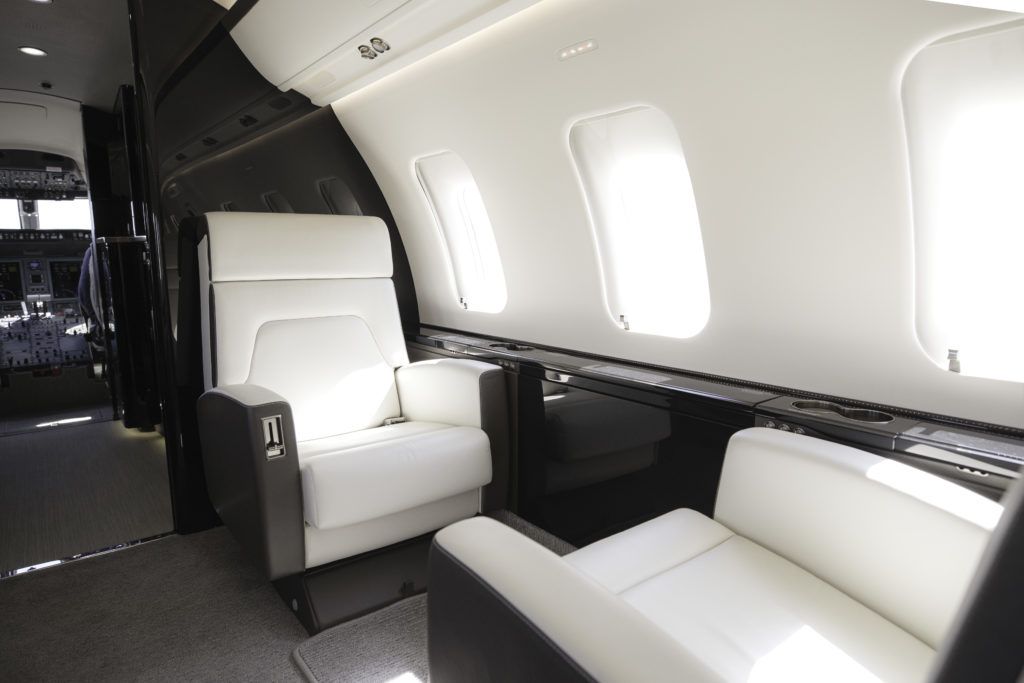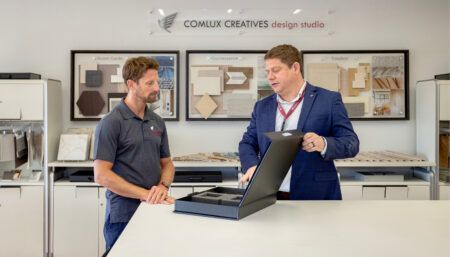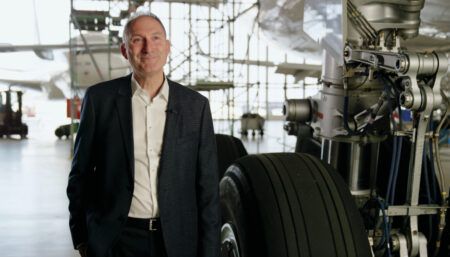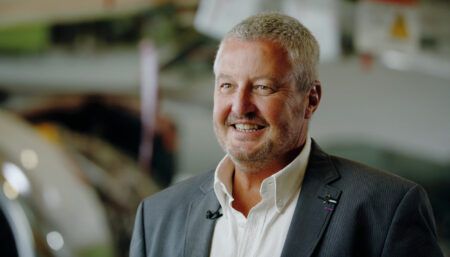The relative cost-effectiveness of buying pre-owned, a tranche of updates, and the reassurance of the OEM’s seal of approval, have proved attractive for customers, securing a smooth take-off for Bombardier’s Certified Pre-Owned aircraft programme.
Launched in 2021, the Bombardier Certified Pre-Owned (CPO) aircraft programme has been growing momentum with the OEM’s customers to the extent that there simply weren’t any examples available to show off at a tradeshow until EBACE 2023, and even that one had a customer lined up. To date more than 15 have been sold.
“Every time they had an aircraft, it’s sold very quickly,” says Mindy Huang, sales engineering, Bombardier. “It’s very rare that we get a chance to present it to the public, to customers, to media.”
The programme involves selecting, inspecting, refurbishing and upgrading pre-owned Bombardier aircraft – updating everything from the paint to the interiors, avionics and connectivity. The aircraft are delivered to customers with a one-year OEM warranty on the airframe; all applicable maintenance completed; and Smart Services coverage programmes for the airframe, engine and APU. All the work is completed at Bombardier service centres.
Selection criteria
The OEM is meticulous about which aircraft are chosen for the programme; Huang notes it is about “where we see good value for a customer”.
Thomas Fisselier, director of pre-owned aircraft acquisition and sales support at Bombardier, explains
that this involves understanding the provenance of the aircraft. “We take the aircraft through a level-three
pre-buy inspection,” he says. “We go through all the logbooks, the maintenance, to understand where the aircraft’s coming from. How many hours? How many cycles? What modifications have been made already? And based on all these criteria, we make the decision whether or not the aircraft qualifies for the CPO programme.”
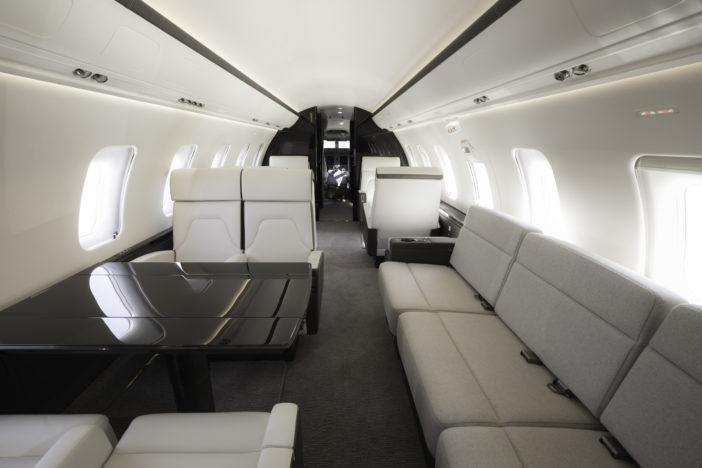
the CPO programme
Peace of mind
For Huang, the two biggest advantages of going to the OEM for a Bombardier pre-owned aircraft, rather than going to an external refurbishment centre instead, are the expertise of the service centre specialists, and the warranty.
“We know the aircraft the best,” she elaborates. “Customers get the OEM experience including support at delivery and aftermarket. Another advantage is that all the maintenance is up-to-date. At a third party, they will update the interior, but the maintenance, the big inspections, may or may not be done. With our CPO aircraft all of that is included.”
Selected aircraft have a clear schedule with no big maintenance events on the horizon for up to 12 months. “The goal is a turnkey service that’s really easy for the customer, that offers peace of mind,” adds Huang.
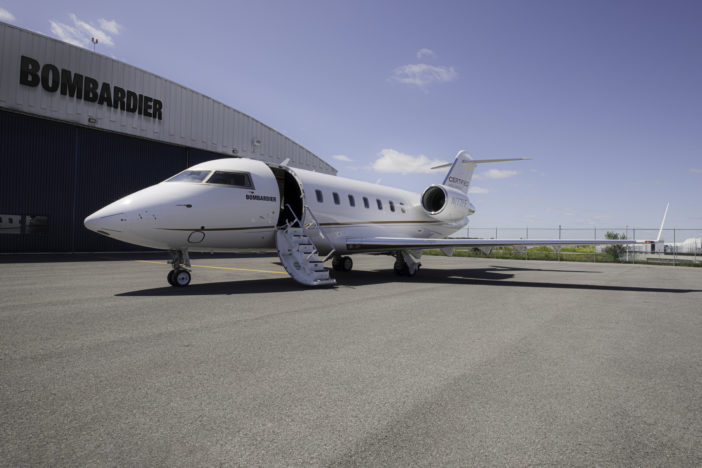
First-time buyers
One particularly relevant customer archetype for the programme is the first-time buyer, Huang notes; Bombardier doesn’t see its CPO programme eating into the market for its new aircraft. “We’re just speaking for a larger audience with this programme, so sometimes a customer who comes in with the CPO programme might then buy a new Challenger or a Global later,” she says.
Technically all the OEM’s types – the Learjet, Challenger and Global families – are available through the CPO programme, although Huang notes that, “We’re focusing more on our Challenger and Global aircraft right now – this is where we see the interest from customers”.
The jet displayed at EBACE was a 2012 Challenger 605. As well as a new interior and paint, it was updated with Ka-band cabin connectivity and new Collins Pro Line 21 advanced avionics; and enrolled in the Smart Parts Preferred and Smart Link Plus connected aircraft programmes. “The first time I walked in, I didn’t know it was from 2012,” recalls Huang. “I thought, ‘This is almost like a Challenger 650 fresh off the line.”
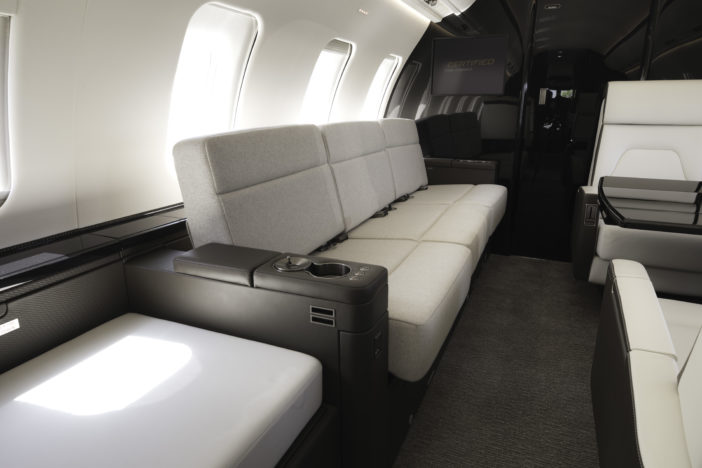
Case by case
The interiors and technologies are updated on a case-by-case basis, usually before a buyer is involved. “Typically, because the cabin doesn’t look finished [beforehand], we will sell the aircraft after
it’s finished,” says Huang. “It’s not like with a new aircraft, where customers just hop in and choose everything. If there is already interest in the aircraft, we will do our best to work with the customer to accommodate their taste, but typically it will be up to our interior designers. Our team of interior designers will look at trends and what is current, and come up with a specification. Then we’ll take pictures of it and put it on the market.”
Huang notes the cabin structure will only be updated if there’s an issue; usually the scope of the interior work is a soft goods renewal. Regarding aesthetics for the cabin interior, the designers choose from a “vast” choice of materials, but the approach is to keep it classic.
“It really depends on the region also,” Huang notes. “For North America, we’ll use lighter woods. In Europe we tend to use darker woods. But we try to keep it as vast and open to as many people as possible. Our designers do studies for that.”
In the Challenger 605 shown at EBACE, the seats were re-upholstered in leather with a trim on the side,
with the divan in fabric. Huang sees fabric used more and more often, with its benefits including durability for high-traffic areas, sound attenuation, and not getting cold in the winter or warm in the summer.
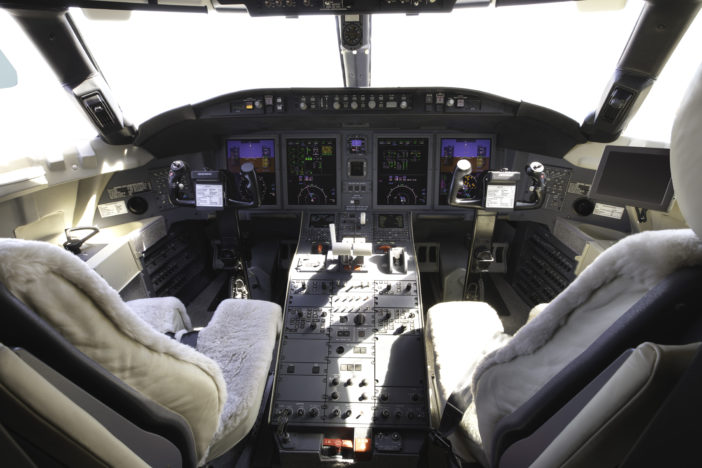
What can be changed?
Not all in-service aircraft are compatible with all the equipment found in Bombardier’s newest aircraft models; the zero-gravity Nuage seats for example are currently exclusive to brand-new Global and Challenger 3500 linefit aircraft.
In any case, part of the appeal of the Bombardier CPO programme can be the swiftness with which an aircraft can be acquired when complicated engineering is kept to a minimum.
“With the success of the CPO aircraft – they just sell so fast – we haven’t updated to the Nuage seats,” says Huang. “On older aircraft, because the structure of the floor is a little different, it requires more engineering for new seats to be installed. But we’re obviously exploring all kinds of options, if there’s something that our customers are asking for a lot.”
Current technology
Like with the interior design, technology upgrades are made on a case-by-case basis.
“When we take a Bombardier aircraft into the CPO programme, it’s inspected by our team and an assessment is made,” says Huang. “In terms of IFC and avionics, we’ll update everything so that it’s current, and ready for any new avionics features that come out. In terms of the cabin technology, it really depends on the backbone of the aircraft and the wiring to be done. We will do what we can up to what the cabin can support, but it’s usually the most up-to-date technology.”
This feature was written by Izzy Kington and first published in the September/October 2023 edition of Business Jet Interiors International.


